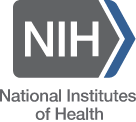Prior to the meeting, reviewers are assigned to your application.
- Your scientific review officer (SRO) is your main contact while your application is under peer review.
- The SRO will analyze the content of your application, check for completeness and compliance with policies, and decide which reviewers can best evaluate it.
- Reviewers have access to your application approximately 6 weeks before the scientific review group meeting. Each application is assigned to three or more reviewers, and at least two of them provide full written critiques. These assigned reviewers lead the discussion at the meeting.
- Before the scientific review group meets, the assigned reviewers confidentially submit preliminary critiques. Reviewers also assign preliminary scores for each review criterion and for the overall impact of the application.
- The SRO then uses the preliminary overall impact scores to generate a preliminary list of applications to be discussed. Applications in the lower half are not typically discussed. Review order for the discussed applications is random.
The review meeting is convened.
- The scientific review group is convened for 1 to 2 days. One member serves as chair and facilitates the discussion. The SRO serves as the designated federal official and acts as a steward of the review process, ensuring policy and procedures are followed, and capturing score-driving points for each discussed application.
- For each application under discussion, any review group members who are in conflict with the application leave the room before discussion begins.
- Assigned reviewers present their evaluations and any mail reviews are read.
- Discussion is opened to the review group, as those beyond the assigned reviewers also have expertise in the topics. After discussion, all reviewers at the meeting privately submit overall impact scores to CSR. The review outcome is a decision based on the assessment of all members of the scientific review group, not only that of the assigned reviewers.
- Relevant NIH program staff are encouraged to attend, but do not participate in the discussion.
The results are released to you.
- Within a few days after the meeting, your priority score and percentile ranking (if applicable) are available to you via your eRA Commons account.
- In most cases, your summary statement will be available via eRA Commons within a month. It will include the written critiques provided by the assigned reviewers, the SRO’s summary of the discussion, scores for each review criterion, and administrative notes of special consideration.
- If your application was not discussed, you will receive the critiques of the assigned reviewers and preliminary scores for each review criterion.
The assigned NIH institute or center takes charge.
- After the review, a program officer (PO) at the funding institute to which your application has been assigned will be your main point of contact. He or she may help interpret your review results and give you guidance in preparing a resubmission.
- In a second level of review, the advisory council of the funding institute/center will consider the peer review outcomes and determine the relevance of your proposed research to the institute/center’s priorities and public health needs.

